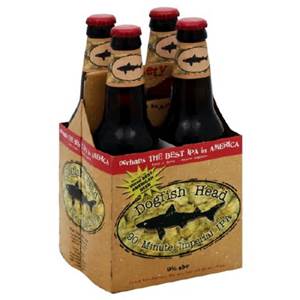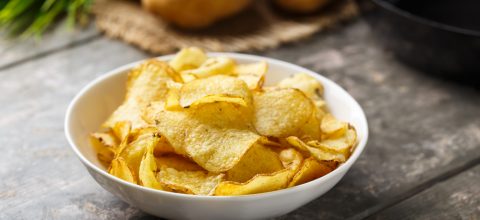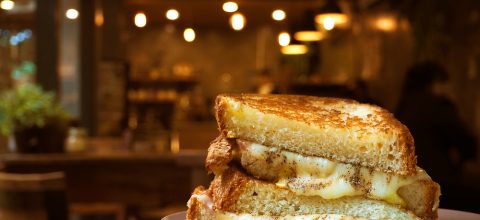The “Pickle Police” questioned me whether combining Indian curry paste into my pickled shiso leaf kimchee was against the laws of pickle making? I replied, “Who said is wasn’t?” We are dipping insects into chocolate as a culinary statement and making IPA’s black; therefore, I am not regressing and have moved on from that issue. I have been experimenting with pickle-making techniques lately. I have been doing a lot of thinking about it as I enjoy some fermented malted beverages and aged libations.
I recently did a small demonstration on simple pickling techniques at the Talking Farm in the town where I live. They have been growing for only two years and just started producing enough lettuce, arugula, kale and a few other items to start selling to local restaurants in the area. The purpose of the farm is to educate the community on how and where their food comes from. Walking through the farm late in the season and seeing all of this produce still on the vine was very inspiring but got me thinking about something!
We are all now so familiar with the farm-to-table movement and the abundance of farmers markets in city centers and community parking lots. The same day I also spent the morning walking through a very formidable farmers market with some of the bigger organic operators with fancy displays of vegetables, fruits and greens. The beauty and abundance of the fresh produce was inspiring but it left me questioning what is happening to the unsold product. Is it being dragged from one market to another? If not, I hope that it ends up on the tables of those less fortunate. I hope there is enough profit on what is sold that the vendors donate to a food depository. I want to be the person who admits we fill our kitchen with pretty organic vegetables, but it is still an economic dilemma for me. I don’t mind paying for the cost of organic, and the effort to get it from central Michigan to Chicagoland. They have a business to run. However, I will only buy it if I know I am going to use it all and not waste it.
The overgrowing of product even on a small farm in anticipation of its sale must be a costly endeavor. The Talking Farm’s manager wanted to collaborate with a chef to produce a line of pickles to preserve the crop and have something to sell in the winter or for fundraising events. That’s when I got excited and started to think about the “Pickle Police” again. Here we go, another jar of murky green vegetables!
Pickles are on every table around the world. Why? Because this was one of the answers to the question of what do we do with this extra produce. It’s preserved in a wide variety of methods, from dry curing, to dehydration to brining, jarring and fermentation. There are some classic examples in this country from the bread and butter pickle to the pickled green tomato. Around the world we have pickled jalapenos, pickled mushrooms and pickled limes. Regardless of what country they are from, what they all have in common is an unmistakable flavor profile that you hate to admit is – addictive!
The flavors of salty, sweet, bitter and sour are all present in a good pickle but then we start to get into the umami of aging and the funkiness of fermentation from lactobacillus in which things get really good. These are the traits in Grey Kunz’s book “The Elements of Taste” that pull and bring out underlying flavors that compliment the basic four. They also compliment textures from cloying sweet and rich fattiness by cutting through them. Think about malt vinegar cutting through the richness and fattiness of fish and chips. There is also research being brought forward about some of the flavors that can develop in fermented and preserved foods. Oxidized fat and concentrated minerals are being considered to be added to the current 5 flavors, yes, umami is at the table and leading the bunch if you ask me.
So in my experimenting, substituting a pungent Indian wet curry paste instead of Korean red pepper paste and Asian pear makes sense to me. They bring piquant and pungency, as well as sweetness, to the table. Shiso leaves bring a whole level of dimension to it. I cleaned and packed the leaves in a paste of garlic, ginger, curry paste, soy and honey. Then, I left them to ferment for a couple of days and now they are complex and earthy. I intend to use them as a base for a sandwich spread or as compliment to rice.
I am not going to abide by the basic rules of pickling and work within the geographic boundaries established by the GOPP (Grand Old Party of Pickles); it’s time for some new thinking. Next time you stare down a bunch of purple carrots or heirloom tomatoes, don’t just throw them on a salad, grab the salt, vinegar and miso paste and start pickling. Those $6 a bunch carrots are really going to appreciate the attention from you when it’s minus 10 degrees outside and there isn’t anything growing.
Beer
Dogfish Head 90 Minute IPA

If you haven’t tried this before (Dogfish Head 90 Minute IPA), or its been a while, this totally represents what being an artisan really means.
Good Read
The Elements of Taste

This is a great read if you are interested in upping your recipe development game.










